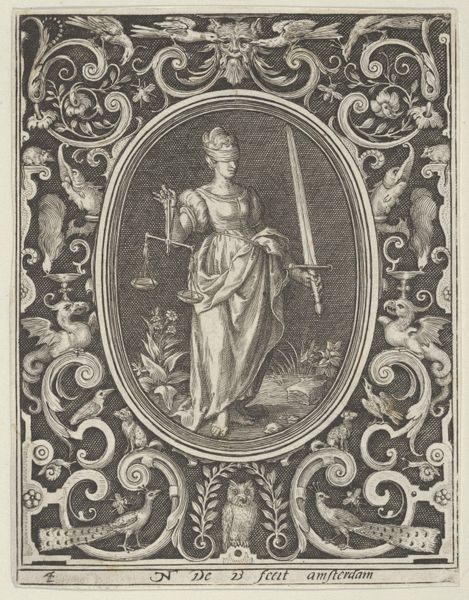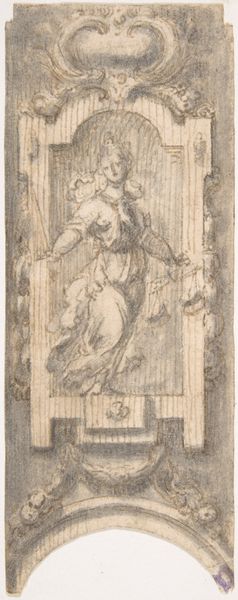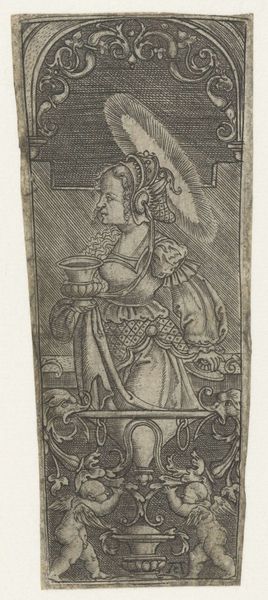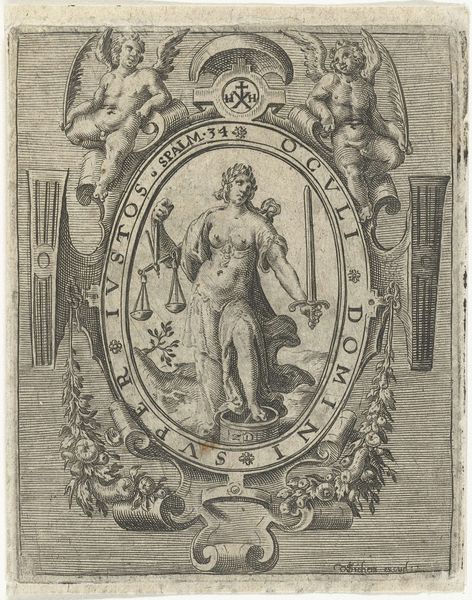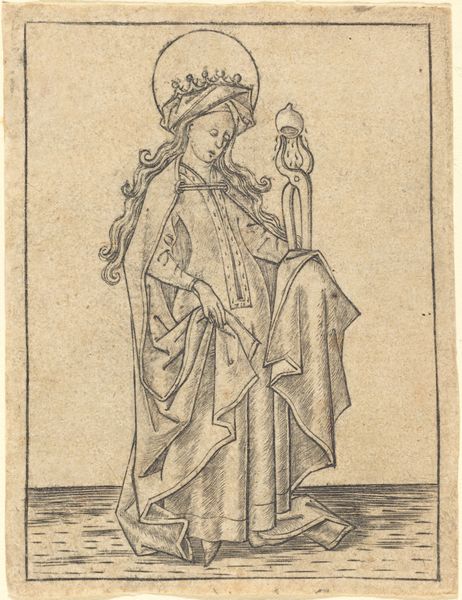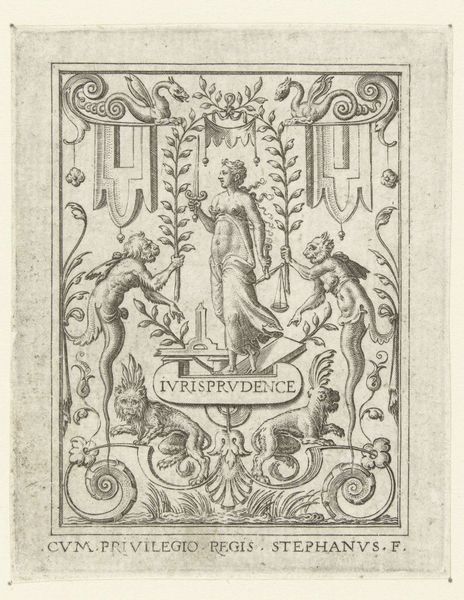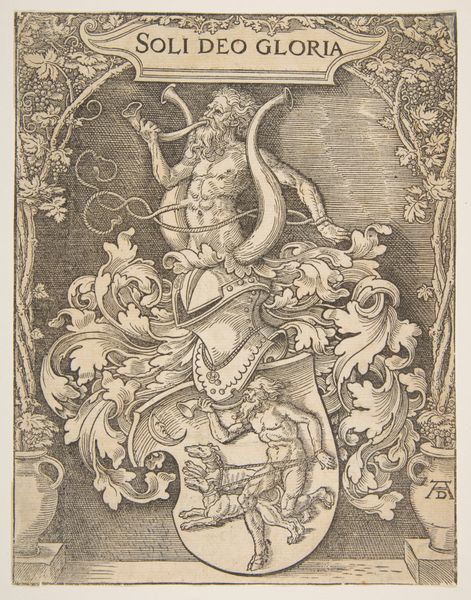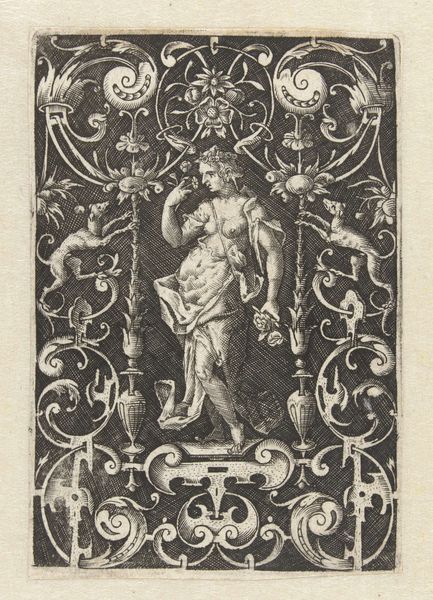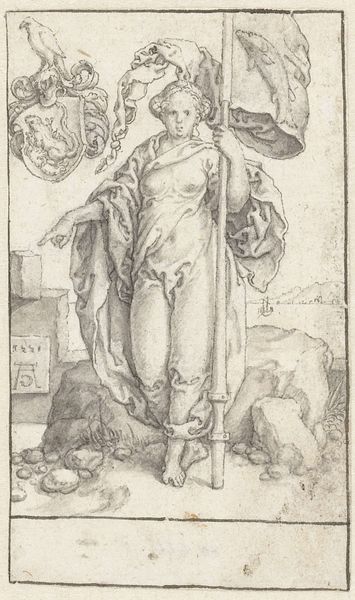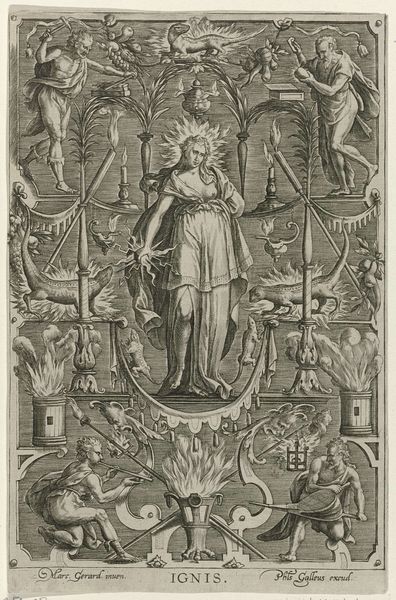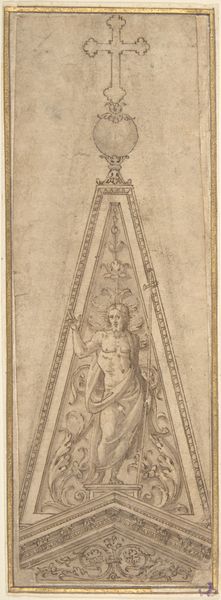
drawing, paper, ink, pen
#
portrait
#
drawing
#
pencil sketch
#
paper
#
11_renaissance
#
ink
#
coloured pencil
#
pen
#
history-painting
#
northern-renaissance
Dimensions: height 245 mm, width 165 mm
Copyright: Rijks Museum: Open Domain
Editor: Here we have "Woman with a Slaughtering Knife" by Hans Baldung, dating from sometime between 1500 and 1545. It's a drawing, seemingly in ink, pen, and pencil on paper. It strikes me as quite a forceful, even unsettling image for its time. What do you see in this piece? Curator: I see a powerful statement about gender and societal roles. The woman's assertive pose, juxtaposed with the tools of a traditionally male occupation, challenges the patriarchal structures of the Renaissance. Consider how Baldung uses the slaughtering knife – an instrument of control – in the hands of a woman. Does this subvert the conventional representations of female passivity, or perhaps comment on women's participation in violence at that time? Editor: That's interesting. I was mainly focusing on the strangeness of the composition. Do you think this could also relate to broader societal anxieties surrounding women and power? Curator: Precisely. Baldung, working during the Reformation, may have been engaging with contemporary debates about female agency and the disruption of traditional hierarchies. Is she an empowered figure claiming agency, or is she a disturbing vision of a society turned upside down? Also, consider the contrast of the bull head depicted in what seems to be a heraldic shield! How does it relate to women? Editor: The heraldic imagery adds another layer, suggesting nobility, maybe even responsibility in addition to everything else! It really challenges simple interpretations. Curator: Indeed. It pushes us to examine the complex relationship between gender, power, and violence in a society undergoing profound change. What do you make of the fine rendering style used here? What could be Baldung's motivation in creating such detail? Editor: It’s fascinating how a drawing from so long ago can still spark so much debate about social issues today. It highlights how the struggle to have equality is perennial. Curator: Exactly, and understanding art's engagement with these struggles gives us critical insights into our own present.
Comments
No comments
Be the first to comment and join the conversation on the ultimate creative platform.
